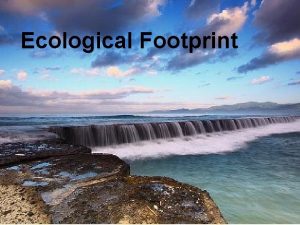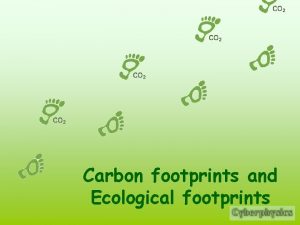Ecological Footprints The environment of a city cannot




- Slides: 4

Ecological Footprints • The environment of a city cannot support the population of humans that live there. One reason is that a city is a place where large quantities of resources are consumed but few resources are produced. – Nearly all the food that the citizens need to survive must be transported to the city from somewhere else. – Most of the waste materials that are produced by the citizens are transported out of the city. – The geographic location of a city population is not the same as its ecological location (the places where the population obtains its needs). – The human population of the city, however, is sustained by other ecosystems in other parts of the world. – We are able to use resources that originate far from where we live because we have technology. – Like our bodies, our technology requires a supply of materials and energy from the environment. Our technology also produces wastes that must be disposed of in the land, water, or air.

• Dr. William Rees and his students proposed that population size should be combined with resource consumption and waste production, then converted into equivalent units of productive land water area. He used the metaphor of an ecological footprint to describe his idea. It is summarized in the following equation.

Land/water Ecological Land/Water Footprint = occupied by + used to + produce of a population resources population Land/Water used to dispose of wastes

• This equation reminds us that we depend on land water ecosystems for our survival. • Most of the resources that we use come from outside our communities, and even from outside our country. • The concept of the ecological footprint helps us to see the "big picture" — the relationships between people and resources. • As a measure of overall resource consumption, it indicates if everybody can consume resources at current levels without endangering the planet's capacity to support life. • Present rates of growth in population and consumption worldwide are not sustainable. At some point, we must reduce consumption, population, or both.







